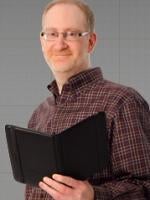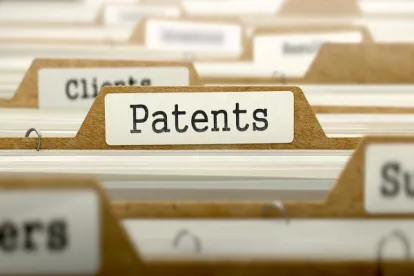Like Johnny Cash’s famous tune “A Boy Named Sue,” “secondary considerations” of non-obviousness suffer for their name. Courts have historically relegated this 4th Graham factor to a “secondary” status, considering objective indicia of nonobviousness only after concluding on obviousness based on the first three Graham factors. But what good does considering this “most probative and cogent” evidence accomplish if that consideration occurs only after an obviousness determination has already been reached?
Despite the fact that the Supreme Court instructed in KSR[1] that objective indicia should serve as a bulwark against hindsight reconstruction, some courts have still been taking the bait and considering objective indicia only “secondarily.” To address this misapplication, the Federal Circuit has repeatedly stewarded practitioners and jurists towards considering secondary considerations throughout the obviousness analysis, rather than as an afterthought. Despite this guidance, confusion remains, and at times, the PTAB and the federal courts continue to treat secondary considerations as the black sheep of the Graham-factor family. Perhaps we can paraphrase Orwell to describe this modern approach to the Graham factors: “all factors are equal, but some factors are more equal than others.”
Lessons for Patent Owners
Searching for cases where secondary considerations of nonobviousness carried the day can feel a bit like trying to find a needle in a proverbial haystack. Many secondary-consideration-based arguments wash out because of the nexus requirement, where nexus is typically shown with respect to a novel claim element. To defeat nexus, a patent challenger can simply demonstrate that the novel element existed in the prior art. However, changes may be afoot.
With WBIP, LLC v. Kohler Co., 829 F.3d 1317, the Federal Circuit clarified its holding from Rambus Inc. v. Rea, 731 F.3d 1248, 1257 (Fed. Cir. 2013), holding that where the allegedly obvious patent claim is a combination of prior art elements, a patent owner can show that it is the claimed combination as a whole that serves as a nexus for the objective evidence. Proof of nexus is not limited to objective evidence tied to the supposedly “new” feature(s). In such cases, an isolated feature being present in the prior art does not undermine evidence of non-obviousness of that feature in the claimed combination. In WBIP, the Federal Circuit reiterated that a presumption of nexus exists for objective considerations when the patentee shows that the asserted objective evidence is tied to a specific product and that product is an embodiment of the invention disclosed and claimed in the patent.
In the wake of WBIP, it is now a viable strategy to prove secondary considerations by hiding the “novelty ball,” i.e., referring to the “combination of features” as the novelty rather than any one specific feature. A patent owner can then show their product to be coextensive with the claimed combination of features to be awarded a presumption of nexus. This strategy provides defensive and pragmatic advantages. First, a challenger cannot simply void nexus by showing the single “novel” feature existed in the prior art. Second, the evidence is often easier to come by when a patent owner does not have to prove that increased sales are tied to a single feature. Instead, the increased sales of the entire product can serve as evidence of commercial success. Similar benefits apply to other secondary considerations—it is much easier to present industry praise or assert copying of a product incorporating a combination of features rather than a single claimed element.
Lessons for Patent Challengers
Are there any creative strategies patent challengers can now advance? Yes! In two recent PTAB cases, a petitioner rebutted the presumption of nexus under WBIP when a single reference taught the allegedly novel combination of features as a whole.[2] This is the easiest and most cost-effective way to rebut the presumption of nexus. Challengers can also still rebut the presumption of nexus the old-fashioned way: by presenting evidence affirmatively demonstrating that the objective indicia can be attributed to extraneous factors other than the patented combination. Note: this latter strategy is a bit more difficult when the nexus is to an amorphous combination of features that are coextensive with the patent owner’s product.
Patent challengers would also do well to remember that the burden is on them to rebut the presumption of nexus by offering objective evidence. Attorney argument that the patent owner failed to show other factors were not responsible for secondary indicia amounts to improper burden shifting. In ex parte proceedings, the patent applicant shoulders the burden to show secondary considerations are a result of the claimed invention and the burden to prove that the evidence is not attributable to other factors such as unclaimed features, marketing, etc. In contrast, for inter partesproceedings and district court litigation, once the patent owner has provided a prima facie case that the asserted objective evidence is tied to a specific product and that product is the invention disclosed and claimed in the patent, they have met their burden. The burden then shifts to the petitioner to rebut by using “objective evidence” rather than attorney speculation about other factors that could have resulted in commercial success or attorney critique of their expert’s conclusions. This objective evidence can take the form of expert declarations, consumer surveys, market analysis, sales figures, price premiums, etc. Be creative!
So perhaps “secondary considerations” will not be subject to the principal of nominative determinism in the long run. The Federal Circuit continues to guide the PTAB and federal courts away from relegating “secondary considerations” to a “secondary” status within the Graham factors, while providing patent owners better avenues to offer, argue, and assert objective indicia of nonobviousness.
[1] KSR Int’l Co. v. Teleflex, Inc, 550 U.S. 398 (2007).
[2] Shenzhen Liown Elecs. Co., Ltd., 8,070,319 B2, 2017 WL 500153, at *14 (Feb. 6, 2017)( “in contrast to WBIP, we determine that the record supports the conclusion that the allegedly inventive features relied upon by Patent Owner of the claimed invention as a whole are disclosed as a wholeby Schnuckle”). Activision Blizzard, Inc., IPR2015-01996, 2017 WL 1418533, at *21 (Mar. 29, 2017) (“the claimed invention as whole, as recited in claim 1 and other claims, is described in the prior art as a whole, i.e., in Shoubridge.”).





 />i
/>i
